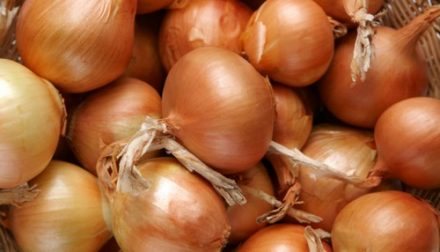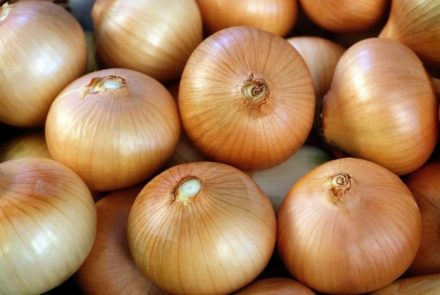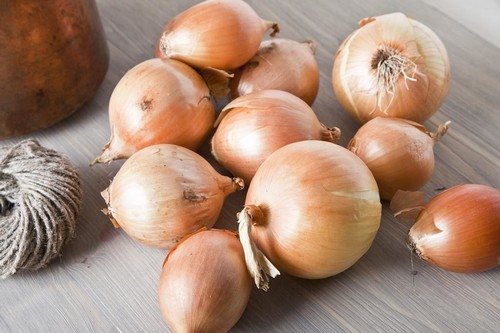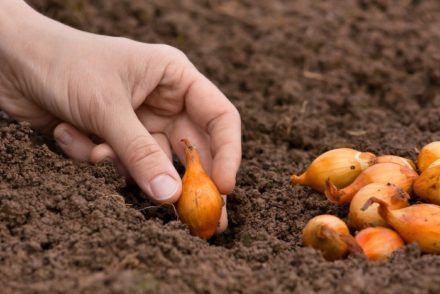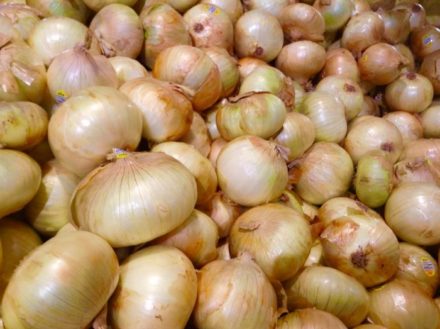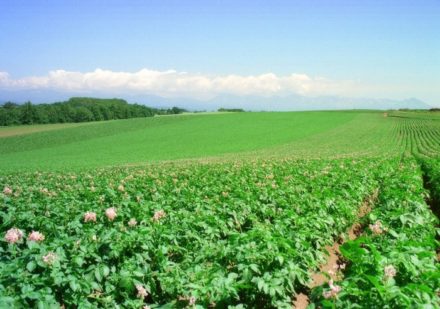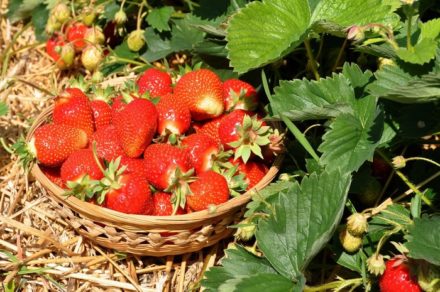Popular wisdom says that onions cure seven ailments. And indeed it is. It contains many vitamins and chemicals. Onions are used in cooking, cosmetology, and household purposes. Gardeners love to grow and store this vegetable. But sometimes they make mistakes when collecting it, which lead to damage to the crop when lying down. To prevent this from happening, you must follow the rules for collecting and storing vegetables.
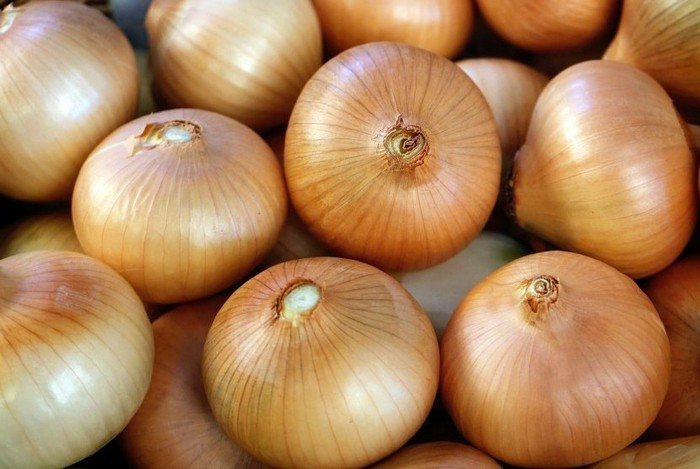
Mistakes when harvesting onions
Onions go through several stages before being stored. It needs to be grown, prepared for assembly, removed, dried, and storage conditions organized. At each stage, gross mistakes are possible, resulting in negative consequences.
Possible mistakes:
- Digging up unripe or overripe specimens.
- Failure to comply with temperature and humidity indicators during collection.
- Harvesting onions in wet weather.
- Sharp temperature fluctuations when transferring bulbs from the garden to the house.
- Watering the crop immediately before harvesting.
- The proximity of healthy specimens to unripe bulbs.
- Low tops trimming. The optimal option is 4 cm.
- Early feather cutting.
- Short and poor quality drying.
- Drying the bulbs in a heap.
- Storing the onion harvest together with other vegetables or root crops.
These are just a few of the mistakes that gardeners can make when sending onions to storage.
Recommendations for collecting onions
At least 30 days before harvesting onions, depending on the variety, watering of the crop is stopped.During this period, humidity is needed the least. By the time the crop is dug up, the soil should be thoroughly dry.
Time to collect
Harvest dates vary depending on the variety, weather, and humidity. The exact dates for onions can be determined by the condition of their feathers. If they turn yellow and lie on the ground, then the onions are ready to be dug up.
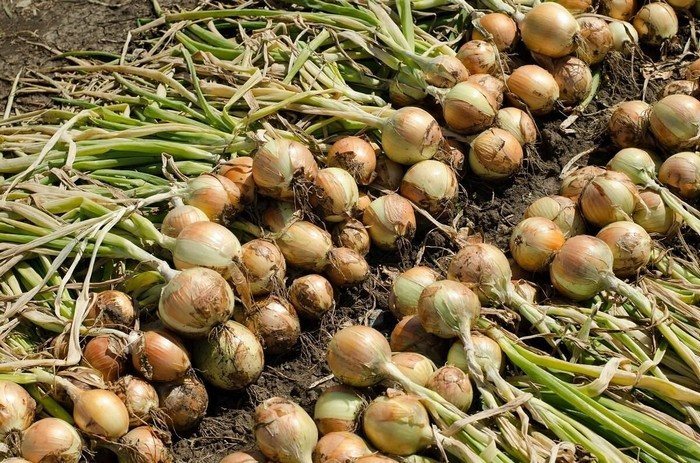
There is no need to wait until all the feathers are on the ground. Half the arrows are enough, since rain is on the way. As long as 70 days have passed since landing. But after drying, such bulbs will have to be monitored for rot.
If the arrows of the bulbs do not turn yellow within 70 days, the plants are brought to this point artificially. Green feathers are pressed to the ground. A regular board is suitable for these purposes. In this case, the arrows will not grow, but the bulbs will gain mass.
Or, using a pitchfork, lightly dig up the onion to break up the roots a little. A pitchfork is stuck into the ground to a depth of 5–6 cm and the plant is slightly lifted up or the roots are cut with a shovel.
Weather selection
It is best to harvest on a sunny day. Therefore, the gardener needs to check the weather forecast and choose the right day. Sunny weather guarantees a dry harvest. If something happens, you can dry the onions right in the garden. And in this case it is not difficult to clear the soil.
If the bulbs are exposed to rain, they are washed, the husks are removed, the feathers are removed, the roots are cut off and dried in a ventilated area. After 15–20 days, a new golden skin will appear on the onion.
Harvesting Rules
For work you will need a pitchfork, scissors or pruning shears. They dig up the turnips with a pitchfork or a shovel, and step back 10 cm from the row.When the onion freely comes to the surface, it is pulled out by the tops, grasping the base of the feathers. Otherwise, the vegetable may be damaged. In order not to take risks, the turnip is dug with tools until it is completely removed.
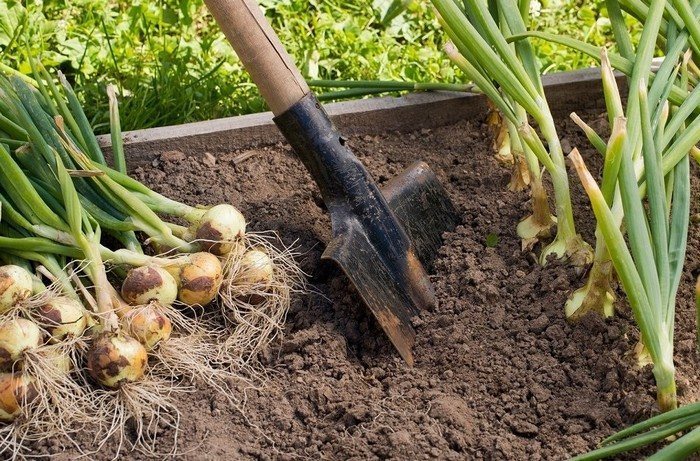
The onions are dried for 2–3 hours in the garden, laid in one layer. Then they are transferred under a canopy for 10–12 days. Before storing for long-term storage, the tops are cut to 5–8 cm, the roots to 0.5–1 cm. If storing in a bundle is meant, the tops are not shortened.
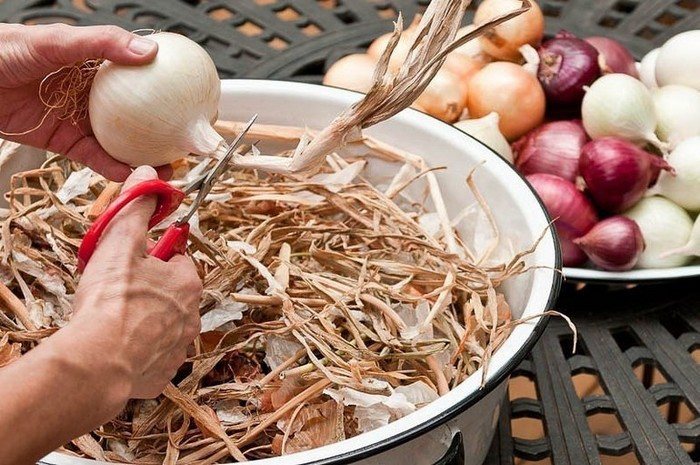
During trimming, the heads are sorted by size and placed in prepared containers. Injured, wrinkled, rotten heads are not selected for storage.
Storage conditions
It is best for the harvest to be in a cool and dark pantry, where the temperature does not exceed 5-10 °C. If this is not possible, a dark place in a dry, ventilated room where the temperature is maintained at 18-20 °C is suitable. Subject to storage conditions, onions will remain fresh for a long time.
Onion storage container:
- wooden or plastic boxes with holes in the walls for air circulation;
- 5 kg cardboard boxes with holes;
- nets for vegetables made of nylon for 3–5 kg;
- wicker baskets;
- linen bags.
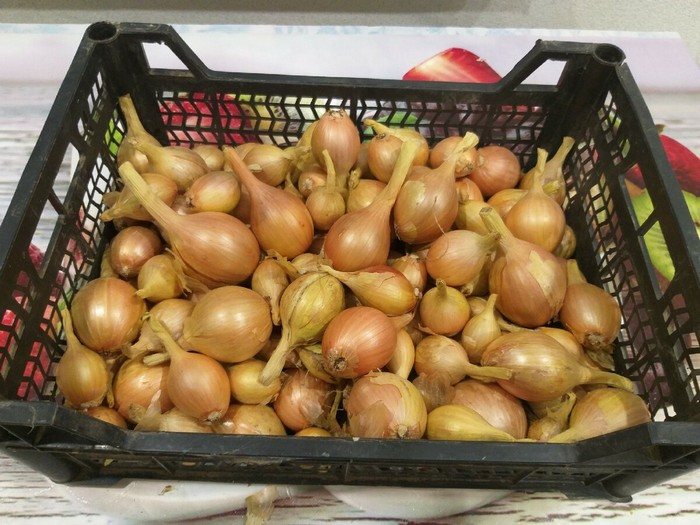
Since vegetables need a constant flow of air, they are poured into containers in a layer of no more than 50 cm. Otherwise, the product may spoil. The containers are installed above the floor using shelves or stands.
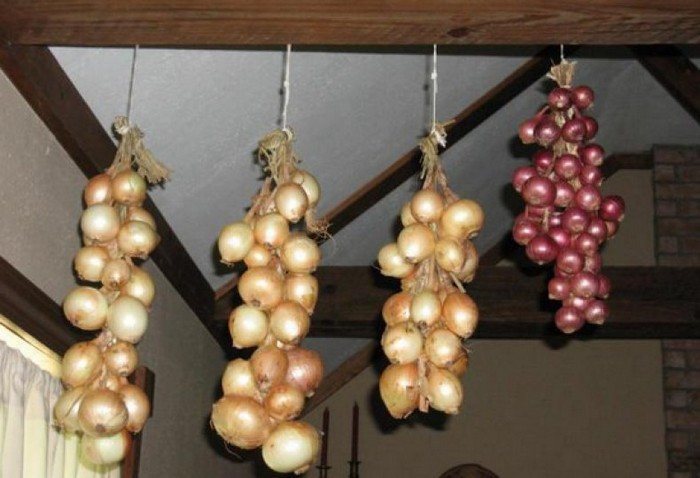
Onion heads will remain usable for a long time if agricultural practices and correct storage conditions are observed. Therefore, experienced gardeners advise not to neglect the instructions for growing and storing crops.This will lead to a reduction in the percentage of errors and obtain a good result.



